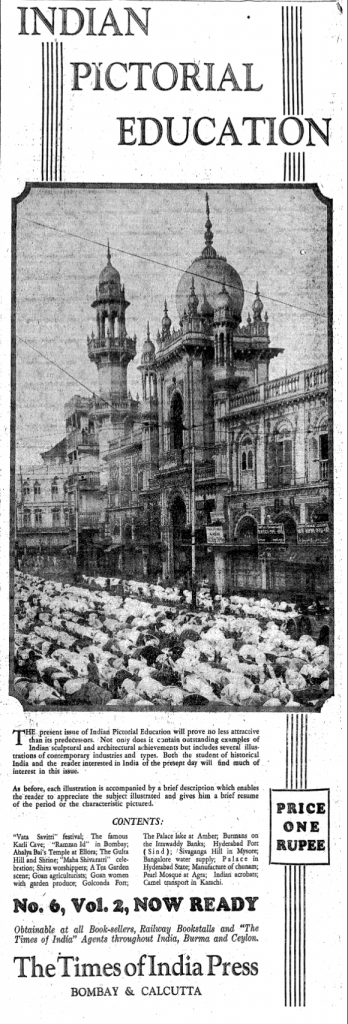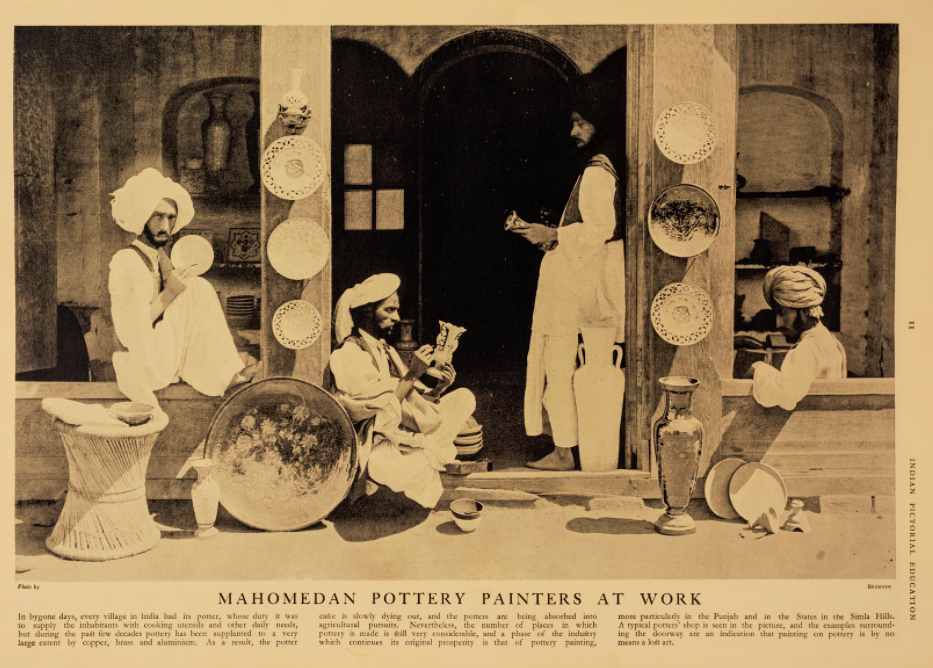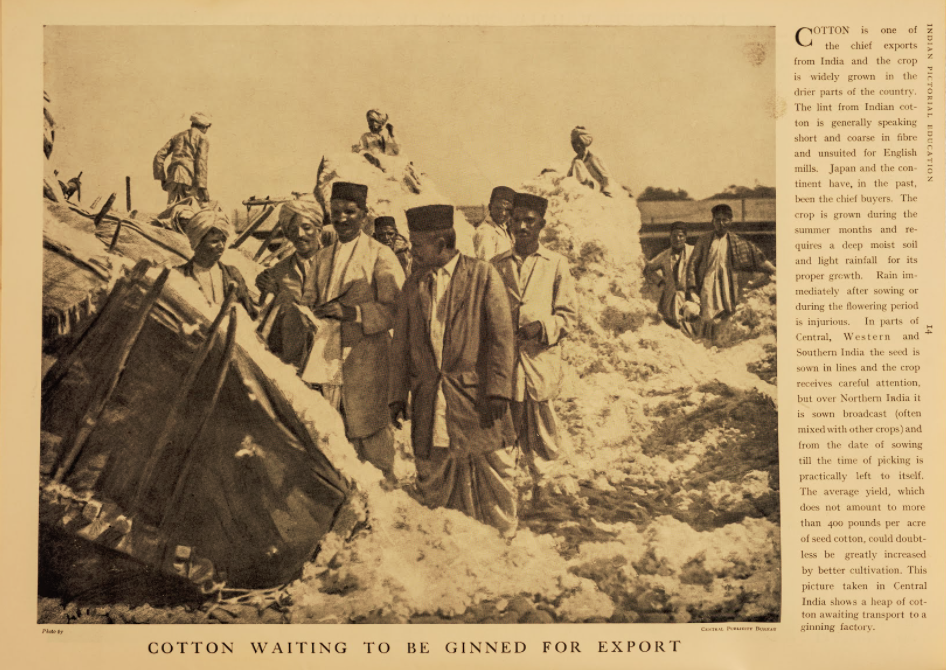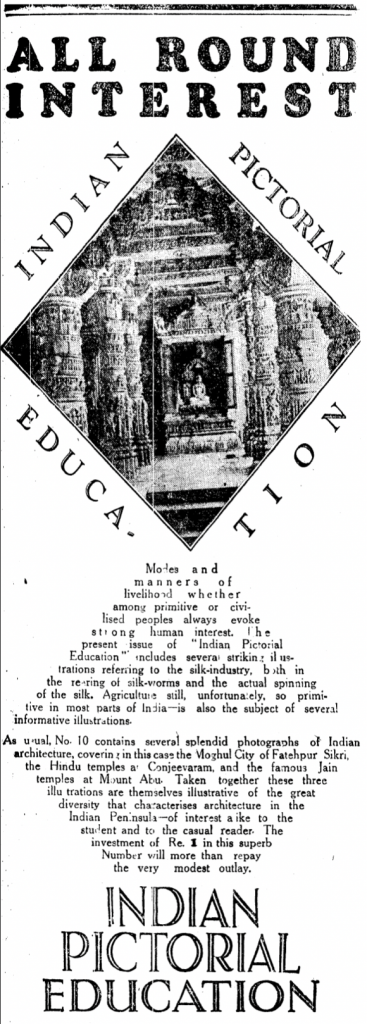Started in 1929, Indian Pictorial Education was a monthly art magazine, published by the Times of India and was based on the design of Pictorial Education that was originally published in London. Focusing on a different theme each month—from architecture to textiles— the magazine featured full page photographs accompanied by descriptions of these various processes and insights into Indian culture. Hailed as a uniquely informative and entertaining publication, the photographs were seen as the highlight of this publication aimed towards school-teachers and students who wished to learn more about various aspects of Indian life.
In a way, this publication may almost be thought of as an evolution of the commercial album produced in the 19th century. An album such as the Indian Amateur’s Photographic Album, was structured similarly, with a curated set of three images per issue, accompanied by a letterpressed description footer image. Several subjects such as the architecture of Bijapore, or the Caves of Karlee, amongst others were also represented in the album before appearing as a part of the magazine. I find the Indian Pictorial Education to be an evolution, for several other reasons as well. The explicitly stated function of education and information gave the publication a very different standing and a wider readership, made possible through its affordable prices, and easy availability. (The magazine was available at booksellers as well as railway bookstalls). Further, its efforts to be comprehensive in its approach towards education might have been a unique one at the time, as we find the magazine used as a reference point in an instructive manual from 1942, several years after the publication of the Indian Pictorial Education ceased. The manual titled, “Suggestions For The Teaching Of Geography In India” recommends the use of several images from the magazine as a practical way to teach geography in secondary school.
The title with Pictorial might be bit of misnomer, since photography in the world was already moving away from pictorialism into newer, more experimental forms such as collage and montage inspired by the Cubism and Surrealism movements, but this particular magazine may have only been named so due to its primarily photographic content. But the 1920s saw an exponential rise in pictorial magazines across the world, that may be attributed to cheaper printing techniques, lighter cameras as well a growing demand for photographic illustrations. Attempting an explanation for the rise of pictorial magazines and pocket journalism, or digests, Harry Shaw writes about the early 20th century, “The wife with a family and social duties or the husband with a profession or business does not have time for a liberal education on the side. The result is that most have to be content with a glaze of semi-culture, a background sufficient to afford a partially adequate standing of the general forces and the events that occur daily as an expression of them. …Their plight is very real and constitutes a pressing educational problem. But it has not gone unheeded. Inspired hardly by altruistic aims, rather by the possibility of exploiting a unique publishing field, a new journalism based on the needs and the intellectual standards of this huge audience has been evolved, suddenly in recent months, to pour forth in a deluge of pictorial and digest magazines.” 1
With the passing of time, the world saw the meteoric rise of Life, a widely popular illustrated magazine started in the United States in 1936, Look, the short lived Vu, amongst several others across the world. Even in India, a few magazines such as Caravan, Marg or the consistently popular Illustrated Weekly of India, support Shaw’s argument for the need of this new kind of journalism. I shall discuss some of these illustrated magazines in greater detail as another part of my research.
Though I have been unable to see any copies of the magazine, the vivid and flashy advertisements for the Indian Pictorial Education themselves reveal the breadth of the subjects and seeming popularity of this printed periodical, and present another form of the printed photograph. Some of them are shared below.
- Pocket and Pictorial Journalism, Harry Shaw, The North American Review , Summer, 1937, Vol. 243, No. 2 (Summer, 1937), pp. 297-309





